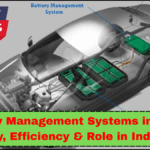India’s auto component industry is entering a high-growth phase in 2025. With global supply chains diversifying and shifting toward cost-effective, reliable sources, India is rising as a critical hub. From traditional parts manufacturing to high-tech components for electric vehicles, the country’s export footprint is expanding rapidly. This shift reflects not only India’s growing capability but also a strategic response from global suppliers looking to minimize risks and costs.

India’s Auto Component Export Growth: A 2025 Outlook
The year 2025 marks a major leap for India’s auto component export trends. After a steady recovery post-pandemic, exports of auto parts have not only stabilized but accelerated. According to data from the Automotive Component Manufacturers Association (ACMA), India’s auto component exports are expected to surpass $25 billion in 2025—a 15% jump from the previous year.
This growth is driven by several factors:
-
Favorable trade policies and bilateral agreements.
-
A surge in demand from the U.S., Europe, and ASEAN markets.
-
Expansion of electric vehicle (EV) and hybrid platforms, where India is supplying both mechanical and electronic components.
Why Global Suppliers Are Turning to India
Global suppliers are re-evaluating their sourcing strategies. India’s appeal lies in its skilled labor, competitive manufacturing costs, and increasingly digitalized factories. Global OEMs are also setting up sourcing and R&D centers in India to get closer to these parts manufacturing hubs.
India has carved out a strong position in multiple component categories:
-
Engine parts
-
Transmission and steering components
-
Suspension systems
-
Brake systems
-
Electrical and electronic components
As global suppliers look to de-risk from overdependence on China, India offers the scale, political stability, and supply reliability they seek. Companies like Bosch, ZF, and Magna have ramped up operations in India to tap into the growing export pipeline.
Technology-Driven Manufacturing Leads the Charge
India’s parts manufacturing industry is embracing automation, robotics, and Industry 4.0 technologies. These advances are crucial for meeting global quality standards and just-in-time delivery models.
Tier-1 suppliers in India are investing in:
-
CNC precision machining
-
AI-enabled quality checks
-
Supply chain digitization
-
Green manufacturing practices
This shift is particularly relevant in exports to Europe and North America, where emission norms and traceability requirements are stringent. EV components—especially battery enclosures, BMS units, and lightweight structural parts—are emerging as high-growth segments for exports.
Policy Support and FTAs Fueling Exports
The Indian government has played a strategic role in supporting auto component exports. Key initiatives include:
-
PLI Scheme for Auto and Auto Components – Offering incentives for advanced component production.
-
Free Trade Agreements – Ongoing talks with the UK, EU, and other regions are opening tariff-free access for Indian exports.
-
Remission of Duties and Taxes on Export Products (RoDTEP) – Helping manufacturers remain price-competitive globally.
The combination of proactive policy, a growing supplier base, and advanced capabilities has positioned India as a top choice for global sourcing.
Challenges and the Road Ahead
Despite the surge in demand, the industry faces certain challenges:
-
Raw material cost volatility
-
Logistics and port delays
-
Need for stronger R&D investment
However, these hurdles are being tackled. Government-backed infrastructure upgrades and industry-private collaborations aim to resolve bottlenecks and further streamline the export supply chain.
A Glimpse at the Future: What to Expect by 2030
Looking beyond 2025, India is expected to become the third-largest auto component exporter globally. The convergence of software and hardware in automotive systems, especially in EVs and autonomous vehicles, will further boost export complexity and value.
India’s tech-savvy engineering talent is expected to play a central role in this transformation. With more partnerships between startups and legacy manufacturers, innovation will drive the next wave of exports.
Frequently Asked Questions (FAQs)
Q1. What are the key trends in India’s auto component export sector in 2025?
A: India is seeing strong growth in exports, driven by EV parts, advanced manufacturing, and rising demand from global OEMs. The industry is leveraging technology and policy support to enhance its competitiveness.
Q2. Why are global suppliers sourcing more from India?
A: India offers cost-effective, high-quality manufacturing with political stability, skilled labor, and strong logistics. These factors make it an attractive alternative to China.
Q3. Which components are leading India’s export boom?
A: Engine parts, suspension systems, transmission components, EV parts, and electronics are among the most exported categories in 2025.
Q4. How is the Indian government supporting the auto parts export industry?
A: Through PLI schemes, FTAs, and incentives like RoDTEP, the government is actively supporting competitiveness and global market access.
Q5. What role does technology play in India’s export success?
A: Automation, AI-driven quality control, and green manufacturing have helped Indian suppliers meet global standards and expectations, especially in EV and safety-critical parts.
click here to learn more



